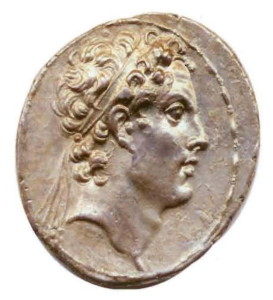The Gerousia
 Excerpted from Lawrence H. Schiffman, From Text to Tradition- A History of Second Temple & Rabbinic Judaism, Ktav Publishing House, Hoboken, NJ, 1991.
Excerpted from Lawrence H. Schiffman, From Text to Tradition- A History of Second Temple & Rabbinic Judaism, Ktav Publishing House, Hoboken, NJ, 1991.
Evidence of various kinds indicates that there was a Jewish representative body or council during the early Hellenistic period. The Talmud identifies those who were associated with Ezra and Nehemiah in the restoration period, and who continued their work after them, as having formed an early representative group, known as the “Men of the Great Assembly.” Bodies of this type included members of the various leadership and aristocratic classes.
Although there is, in fact, no direct evidence in the Bible for the existence of a Jewish representative body, many biblical scholars, following Josephus, have pointed to the elders of the First Temple period as constituting a group of this type. Similar bodies of elders or aristocrats who were consulted by the ruler and whose approval he required functioned during the conquest of Canaan in the time of the judges. Talmudic literature assumed that the Men of the Great Assembly, in the era of the return, had handed down the traditions which ultimately made up Pharisaic-Rabbinic Judaism. Some modern scholars accept the existence of such a group, but see it as an ad hoc body, convened only on momentous occasions in the history of the nation.
No contemporary evidence can be cited for a representative group in the Persian period, but during the Hellenistic period the Gerousia (Greek for “council of elders”) occupied this role. There were also Jewish Gerousias in some parts of the Hellenistic Diaspora. The Gerousia may be seen as a forerunner of the later Sanhedrin, known from the Herodian period, and also of the Bet Din Ha-Gadol, the highest of the rabbinic courts.
In the edict he issued following his conquest of Jerusalem, Antiochus III mentions that he was given a lavish reception by the Gerousia, in consequence of which he exempted its members, together with the Temple officials, from certain taxes. He says nothing of any separate welcoming ceremony conducted by the high priest. Similarly, during the Maccabean period, we find that Antiochus IV directed his official correspondence, not to the high priest, but to the Gerousia, apparently seeing it as the governing body of Judea. Jews outside the Land of Israel in the same period also regarded the Gerousia as representing the people as a whole. The membership of the Gerousia seems to have included both priestly and lay leaders, the latter no doubt coming from the aristocracy and connected closely with the priesthood. This is consistent with the composition of the later Sanhedrin, which was made up of both Pharisaic and Sadducean (priestly) elements.



